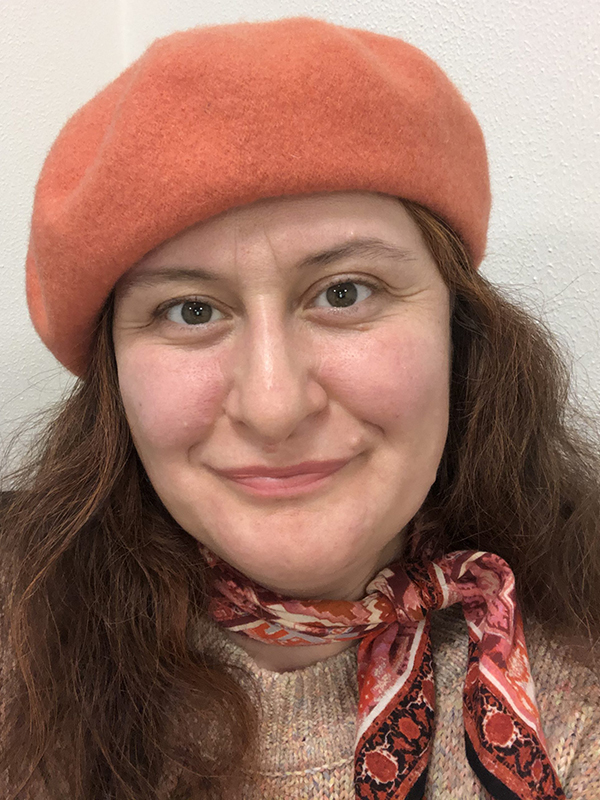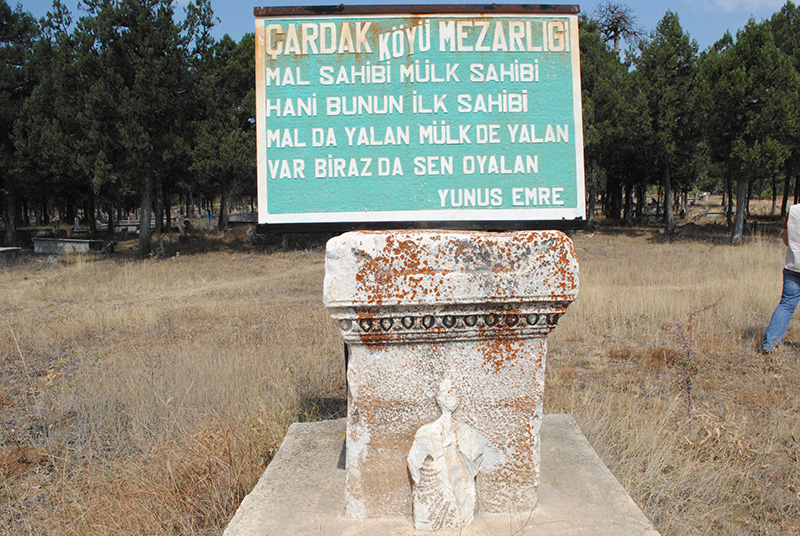
Son on yılda Türkiye’de kültürel miras konularına olan ilgi artmıştır. Ankara İngiliz Arkeoloji Enstitüsü (BIAA) ve ANAMED tarafından ortaklaşa yürütülen SARAT projesi (Safeguarding Archaeological Assets of Turkey) bugüne kadar ulaşılan bir kilometre taşıdır. ANAMED’de yürüttüğü araştırmanın amacı, Eskişehir ilindeki kültürel mirasın anlaşılmasına yönelik araştırmalara katkıda bulunmaktır. Projenin ilk amacı, eski eserlere yönelik yerel algıları değerlendirmek ve arkeolojik varlıkların korunması konusunda bilgi ve farkındalığı artırmaktır. İkinci amacı ise kuzeydoğu Frigya’daki kutsal toprakları ve kutsallığı araştırmaktır. Proje, şehir merkezlerindeki köy muhtarlarıyla toplantılar düzenleyecek, yerel halkla mahallelerindeki kutsal yerler ve genel olarak arkeolojik varlıklar hakkındaki algıları hakkında 50 kadar görüşme yapacaktır. Türkiye’deki kültürel mirasın yerel anlayışını değerlendirmek için daha fazla vaka çalışmasına ihtiyaç duyulduğundan, bu tür bir proje çok arzu edilmektedir.
Cultural Heritage Studies in Eskişehir Province, Turkey: Preliminary Results
Hale Güney
Between 2014 and 2021, I conducted an epigraphic survey in the province of Eskişehir in central Anatolia, which comprises the imperial estate Choria Considiana, as well as the cities Colonia Germa, Pessinous, Akkilaion, and Midaion. I carried out this survey as project director with the permission of the Ministry of Culture in Turkey. The surveys have provided evidence for the existence of Galatian and Thracian names, provincial boundaries, historical geography, a previously unknown sanctuary of Zeus Sarnendenos, the cults of Zeus Sarnendenos, Zeus Akreinenos, Zeus of the Cedar Tree, and Zeus Ordobanenos, and local stonemasonry that existed in this region.
Our team has been challenged many times when contacting local people to tell them about our work and receive their help. Furthermore, the number of illegal excavations in the region increases every year. Unfortunately, damage to the inscriptions is common, as people especially believe that they will find gold inside natural stones. When we record an inscription, we know we may not find it in the same place next year, because the inscriptions disappear. Moreover, it is not possible for the local museum to store all the material found in the countryside. All these reasons clearly show us that communication and collaboration with the local people are crucial to increase awareness about protecting archaeological assets. Another cultural heritage issue is the attributes given to the sites by locals. Some of the Roman and Byzantine necropoleis and sanctuaries surveyed by our team are considered sacred or intangible or haunted land by the inhabitants today. The importance of local values in heritage conservation and management policies has been highlighted for decades in the literature.[1] Thus, it is essential to consult local communities about their values in order to include them in heritage conservation policies instead of making decisions and implementations on their account. The aim of my project is, therefore, to evaluate local perceptions of antiquities and to increase knowledge and awareness about protecting archaeological assets. I also believe this project will help the locals and thereby the researchers who will work in the region after us.
In order to accomplish the aforementioned objectives, I first conducted ethnographic interviews with locals to learn about their perception of sacred or intangible or haunted places in their neighborhood. Secondly, I attended meetings with village headmen in town centers. My project focused on three counties which were also included in my survey project: Mihalıççık, Beylikova, and Alpu. The distinct feature of my selected area is that there is no famous archaeological site or ancient city, as in the cases of Pessinus and Dorylaion in Eskişehir. The locals do not have information about archaeological sites and buildings in their neighborhood. Compared to well-known touristic regions, tourism or other sort of activities for archaeological heritage have not yet taken place. Ethnographic interviews, therefore, provided us information about purely local views which are not affected by certain knowledge of history or touristic activities.
The first part of the project, which is about the local perceptions of antiquities, focused on case studies, including the sanctuary of Zeus Sarnendenos and its surroundings, Roman and Byzantine necropoleis, churches, and other spaces in the surveyed area located in the east of Eskişehir province. The cases were chosen because they are considered sacred or intangible or haunted land by the inhabitants today. This phenomenon has been examined based on the results of short interviews with locals. There are at least a few reasons to observe such continuity. First of all, the availability of stone (marble or limestone in good shape) at older sites is one reason for new burials of revered figures. When the first Turcoman families and Muslim dervishes came to a region, they reused the available material for their needs. In addition to this practical reason, the stories told by the inhabitants in the region, including their personal experiences—for example, god’s anger, seeking god’s help to increase fertility in one particular place, and the hesitation to use such places for festivities—reflect the ‘unchanged’ nature and needs of the inhabitants of the countryside. In Gürleyik village, for example, there is a tomb believed to be Ali Paşa’s, and the neighborhood is known as Paşa Şehitler (Fig. 1). The site is also a Roman and Byzantine necropolis with no prior excavation, but it is listed as an archaeological site by the Eskisehir Council for Conservation of Cultural and Natural Heritage. The tomb is situated on a flat area with a view of the village. The site was used as a threshing field by villagers, especially in the past. Although it is not as busy as it once was, the locals still gather there to pray for rain. They highly respect the tomb area. They naturally safeguard the site due to their attitude and the values they attribute to the tomb area.

At the same time, one of the interviews with a villager revealed that the locals are aware of non-Muslim graves in this area. They come across bones and funerary monuments. The interviewer told me that her grandmother (born in 1909) always advised her to show respect to these graves. All the evidence stresses the role of a strong oral tradition accumulated throughout the centuries in this particular region. The region was home to many non-Muslim communities before the creation of a nation state in Anatolia, and they created the link between the pagan and Christian traditions and the Christian and Muslim traditions. For instance, entertainment (such as festivals) and children’s games are one cultural marker that crosses generations. As seen in the case of Çavdarhisar,[2] there is also a similar game in Gürleyik village which includes writing names on eggs and dyeing them with herbs in a boiling pot. The children in the village usually played this in late April when the weather starts to get warmer. Although there is no Christian community in Gürleyik village, this game has similarities with the Easter tradition.
Secondly, I attended meetings with village headmen in the town centers. At these meetings, I talked about the importance of archaeological assets in Turkey and the outcome of our surveys in the region. Following the presentation, the village headmen were asked to respond to a survey with 12 questions (multiple choice). The survey questions focused on their age, education level, and interest in history and archaeology. It also included whether there are any archaeological sites or remains in their village, what they do when they notice an illegal excavation, and whether their knowledge of the archaeological assets and their importance changed after the presentation. Moreover, I emphasized that some sites, which were considered sacred or intangible by locals, were also a necropolis or a sanctuary in the past and thus important for all of us. The preliminary survey results reveal that village headmen are interested in learning more about the archaeological assets in their neighborhoods, and even my brief presentation contributed to changing their perspectives on the importance of archaeological assets. It ultimately increased awareness.
As a result, this project demonstrates the significance of interacting with the local community in heritage protection and management. Heritage protection and management can be carried out more easily if we speak to the locals and find out how they perceive archaeological sites or artifacts. Sometimes, the sites or artifacts might already be significant to the local community, and this significance might not be connected to historical importance or heritage conservation (Fig. 2). We need to establish a link between the past and present to find a middle ground that accommodates the interests of both parties.

[1] Randall Mason, “Assessing Values in Conservation Planning: Methodological Issues and Choices,” in Assessing Values of Cultural Heritage, ed. Marta de la Torre (Los Angeles: Getty Conservation Institute, 2002), 5–30; Dirk H. R. Spennemann, “Gauging Community Values in Historic Preservation,” CRM: The Journal of Heritage Stewardship 3, no. 2 (2006): 6–20.
[2] Ayça Orhon, “Assessing the Values and Meaings Attributed by Inhabitants in Multilayered Rural Heritage Places: The Case of Çavdarhisar” (MA diss., Middle East Technical University, 2019), 65–66.

